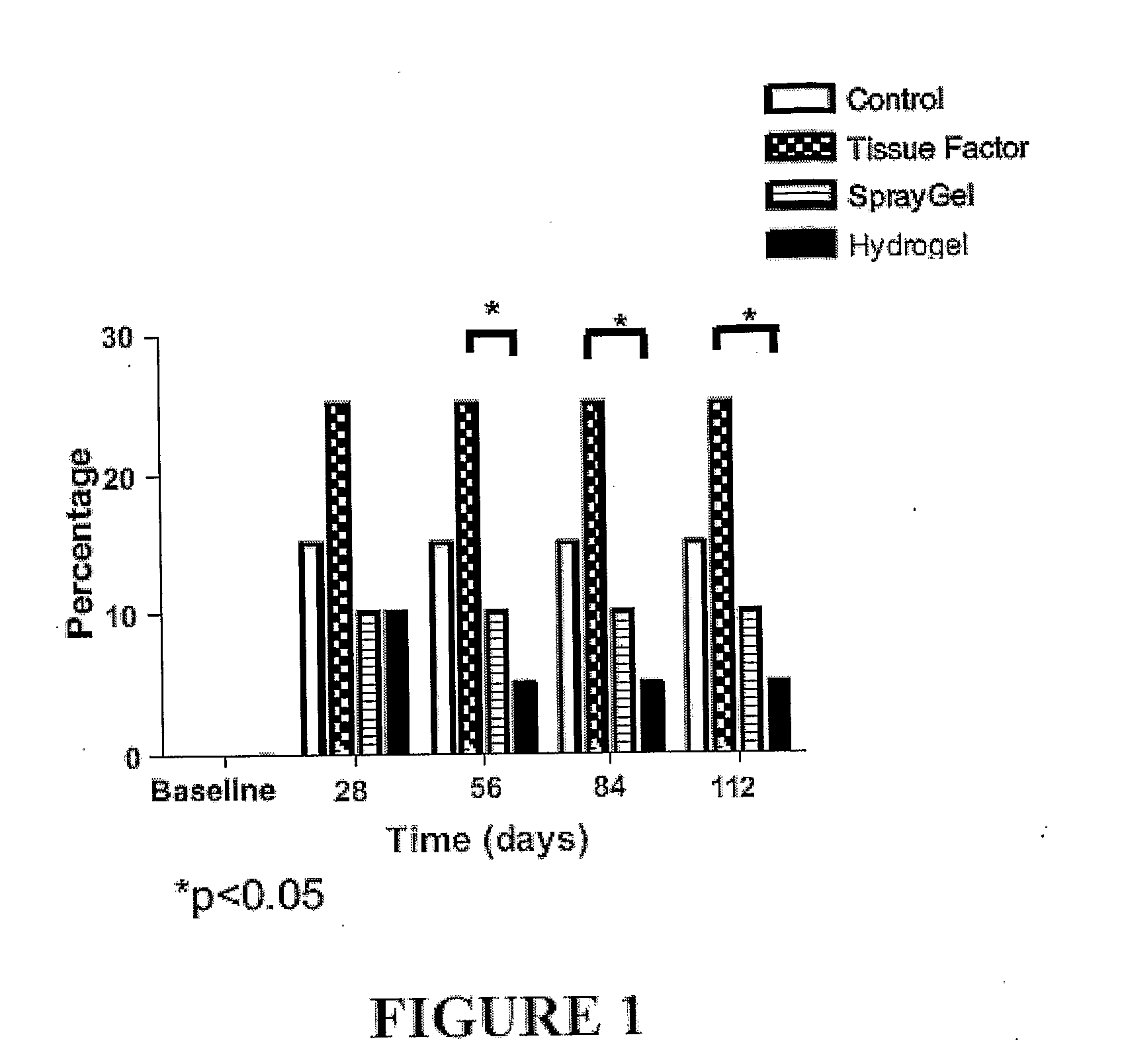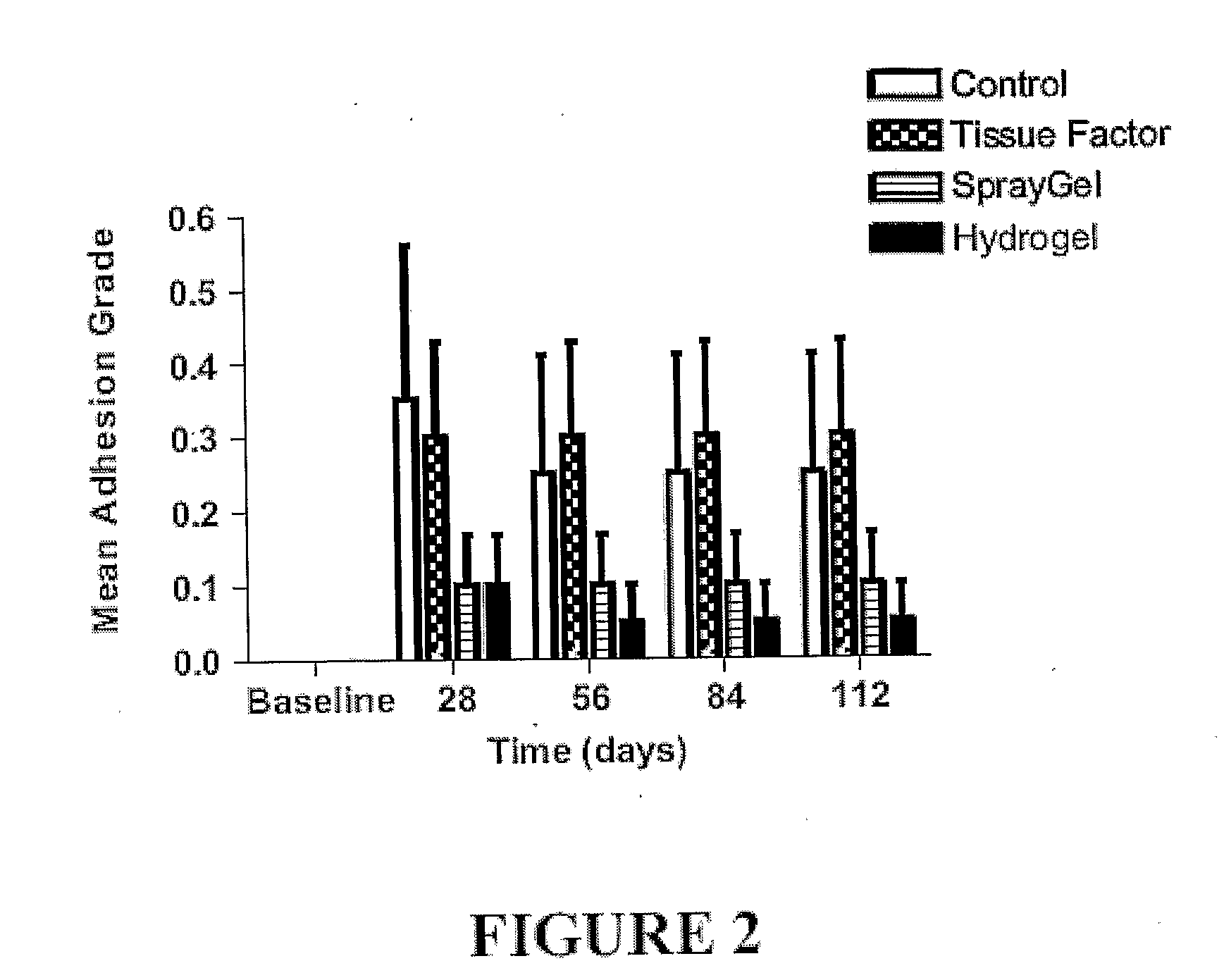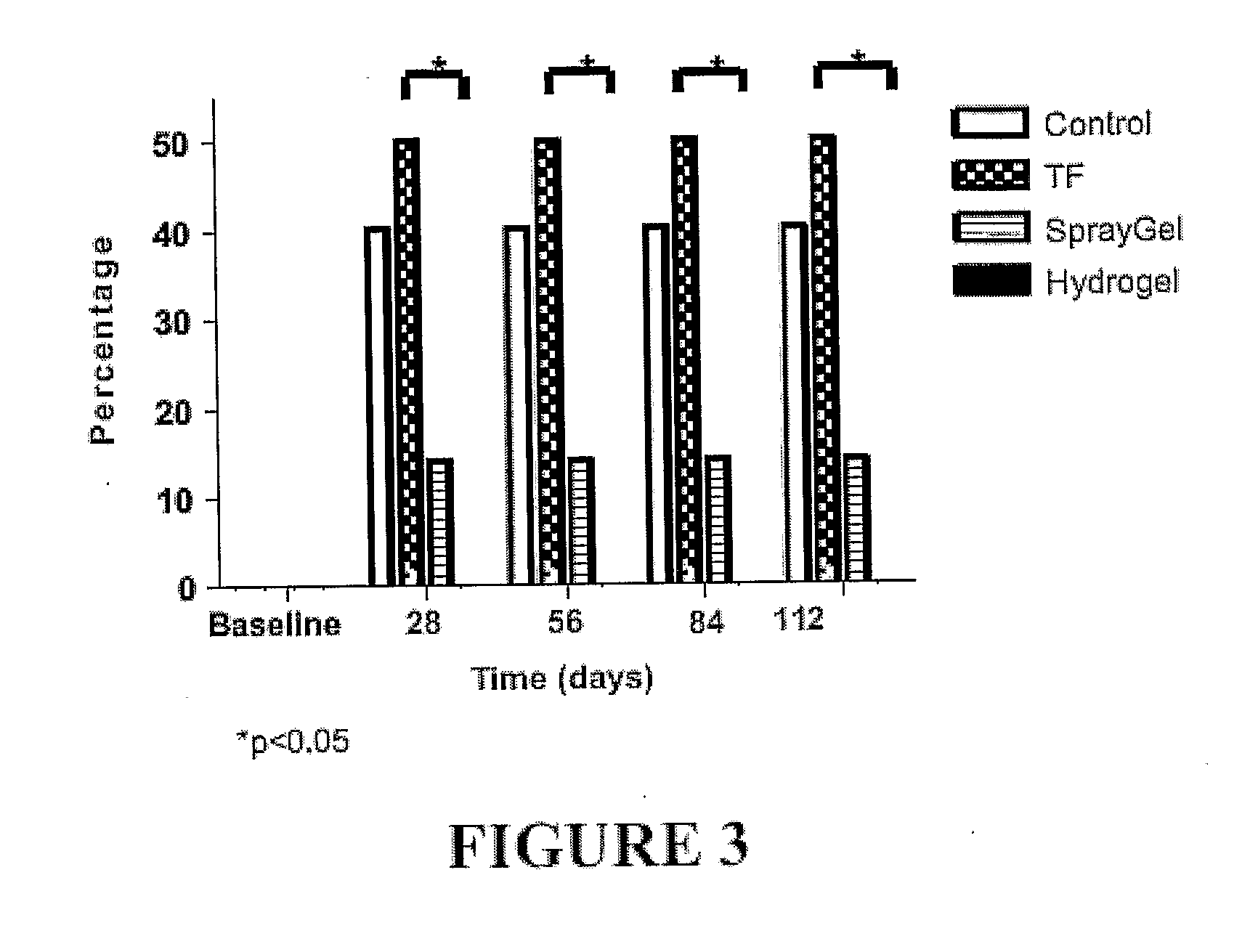Surgical hydrogel
a technology of hydrogel and hydrogel gel, which is applied in the direction of drug compositions, peptide/protein ingredients, extracellular fluid disorder, etc., can solve the problems of fibrinous exudate release, frequent and unfortunate adhesion formation, and serious complications, so as to prevent adhesion formation and facilitate wound healing. , the effect of affecting the haemostasis
- Summary
- Abstract
- Description
- Claims
- Application Information
AI Technical Summary
Benefits of technology
Problems solved by technology
Method used
Image
Examples
example 1
DMF Method
[0282]Batch A. Succinic anhydride (2.15 g, 0.0215 mol) was added to chitosan (1.5 g, 0.007 mol) in 100 ml N,N-dimethylformamide (DMF). The mixture was heated to 150° C. under nitrogen for 3 hrs.
[0283]On cooling the solid was collected from the mixture and washed with methanol then acetone. The dried solid was dissolved in sodium hydroxide (400 ml, 2M) and the solution stirred overnight. Not all of the solid dissolved. The undissolved solid was filtered and the solution evaporated to about 30-50 ml.
[0284]The solution was dialysed in a 3 L beaker by dialysis bag for 48-60 hours with the water changed periodically. The solution was then concentrated and freeze-dried. The N-succinyl-chitosan product was obtained as a cotton-like solid.
[0285]Batch B. Chitosan (from squid pens) (30 g) and succinic anhydride (42 g) in DMF (500 ml) was heated to 140° C. for 20 hrs. The resulting N-succinyl chitosan was recovered by filtration and washed with ethanol and ...
example 2
[0289]Batch A. Dextran (1 g, MW 60,000-90,000) was dissolved in 20 ml distilled water. Sodium periodate (2 g) was added to the solution which was stirred for 3 hours at room temperature. The solution was dialysed in a 3 L beaker overnight with the water changed periodically. The solution was then concentrated and freeze-dried to give aldehyde-derivatised dextran as a white powder.
[0290]Batch B. Dextran (20 g, Aldrich, Mn 21,500, MW 142,000) was dissolved in water (200 ml) and then added to a stirring mixture of sodium periodate (40 g in 200 ml). The temperature of the exothermic reaction was kept at below 35° C. by external cooling and the reaction was performed under nitrogen. After 3 hr, the solution was dialyzed for 3 days (water changed every 12 hr), filtered and lyophilized to give aldehyde-derivatised dextran as a white powder (14.7 g, found C, 39.8%; H, 5.9%). The final molecular weight was Mn 2570, MW 4700.
[0291]Batch C. Dextran (36 g, Aldrich foo...
example 3
Polymer Network Comprising N-Succinyl Chitosan Cross-Linked with Aldehyde-Derivatised Dextran Polymer in Aqueous Solution
[0292]N-succinyl chitosan from Example 1 (30 mg) was dissolved in 0.6 ml distilled water to make a 5% w / v aqueous solution (Solution A). Aldehyde-derivatized dextran polymer (30 mg) was dissolved in 0.6 ml distilled water to make a 5% w / v aqueous solution (Solution B).
[0293]Solution A and Solution B were mixed together until a hydrogel formed (approximately 2 minutes). The hydrogel is the polymer network comprising N-succinyl-chitosan cross-linked with aldehyde-derivatised dextran polymer in aqueous solution.
PUM
| Property | Measurement | Unit |
|---|---|---|
| Fraction | aaaaa | aaaaa |
| Fraction | aaaaa | aaaaa |
| Time | aaaaa | aaaaa |
Abstract
Description
Claims
Application Information
 Login to View More
Login to View More - R&D
- Intellectual Property
- Life Sciences
- Materials
- Tech Scout
- Unparalleled Data Quality
- Higher Quality Content
- 60% Fewer Hallucinations
Browse by: Latest US Patents, China's latest patents, Technical Efficacy Thesaurus, Application Domain, Technology Topic, Popular Technical Reports.
© 2025 PatSnap. All rights reserved.Legal|Privacy policy|Modern Slavery Act Transparency Statement|Sitemap|About US| Contact US: help@patsnap.com



